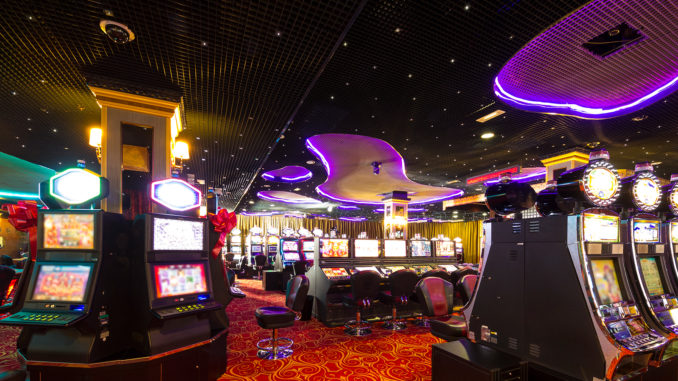 The virus that shut down our casinos throughout the country also changes how surveillance operates, perhaps forever. While some of these changes may not be easily accepted by us and the departments we support, there is a silver lining.
The virus that shut down our casinos throughout the country also changes how surveillance operates, perhaps forever. While some of these changes may not be easily accepted by us and the departments we support, there is a silver lining.
Some of the changes we are already seeing are loss of trained and experienced personnel due to reduction in team members or individuals choosing not to return to work, increased workloads for surveillance because other departments are also working with reduced teams, requiring additional support from surveillance (such as security and the main cage) and necessary changes in our operational focus as we assist with public and team member safety, as it pertains to COVID-19.
While this is a new normal that we must adapt to, it won’t be easy to almost overnight reinvent how surveillance will now operate. After all, we’ve been operating the same way for decades and it works for us.
Or does it?
Rethinking surveillance
I’ve been thinking for a while now, even before the pandemic, that it’s time to change how surveillance operates. For many years our operations have depended upon patrolling the casino and its support areas looking for what doesn’t look right. We checked for the tells and behavior that were indicative of theft, advantage play or cheating, and pounced on violations of policy or procedure. While this was effective, and still is in certain areas such as table games, it never did catch everything that occurs in a casino and never will.
In my experience, almost all theft, fraud and to some extent, advantage play and cheating, can’t be caught by the surveillance patrol. Such activity nowadays is usually hidden or disguised well enough by its perpetrators that even when we’re looking directly at it, we won’t realize that there is anything amiss.
Think about it. Most of our larger thefts, frauds, and cheating now is committed using technology such as a point of sale (POS), terminals at the players club and in slot machines. In these cases, there is not any obvious tell that a patrolling surveillance agent can detect. We must use other means to find this type of illicit activity.
It’s time to change, and I think the pandemic will force us to do that.
Because we may be working with fewer team members, and necessarily redirecting our focus to public safety and the security of the entire property, we must find ways to continue to locate where the crimes are most certainly occurring. Just because there was a pandemic doesn’t mean crime stopped. And now that we’re back, I expect that the bad guys will go back to work too, and they, like the rest us, have to make up for lost time and “wages.”
Work smarter towards guest safety
This is where, I see, we must re-evaluate how surveillance operates. With fewer team members and additional responsibilities, we will need to work smarter in order to provide safety for our guests and team members, ensure a clean property and healthy workforce, and carry out our traditional mission of detecting advantage play, cheating and other crime.
So how do we do that now that we know our methods of operating are now outdated?
We need to use those practices that have always worked for us as well as technology to lead us to where we need to be. The practice I see surviving is video audits and using the technology we already have to help us operate proactively, as we will need to do to catch what is being hidden from us.
New security and surveillance methods to consider
This is what I recommend to keep the edge on your surveillance operations:
1. Perform Video Audits Regularly
Video audits are probably the best weapon we have for ineffective operation, policy/procedure violation, lack of profitability, theft/fraud, advantage play and cheating. The focus on a department by surveillance almost always reveals what’s going on underneath, allowing us to detect the root cause of an issue or a loss. Most surveillance departments don’t do these, resulting in less or no detections, ever!
2. Use Technology
Most of our surveillance departments have access to technology being used in the casino, such as POS information, player ratings and gaming statistics, blackjack analyzation, facial recognition and license plate recognition, to mention a few. But, really, how often do we use it?
Most surveillance rooms have lots of good stuff, but don’t always use it. A familiar example to a lot of us is POS information. Most of us are familiar with eConnect, the system that interfaces video with transactional information and reports exceptions, such as voids and no sales, etc. This is an excellent system to detect and investigate existing and developing theft and fraud anywhere you have a POS; however, most surveillance operations fail to use this system except when asked to do so by the food and beverage manager or human resources. Usually this request is made after a theft has been uncovered by someone else, not surveillance!
That’s because we don’t use the system every shift, every day, like we should. It’s typical for surveillance that we want the newest technology as quick as we can, use it religiously for a few weeks, then cast it aside to go back to the same old random patrol because it’s easier.
Remember, the bad guys are using technology to steal from us. We must use technology to catch them.
When we use our surveillance operation to audit key departments and transactions and technology to develop information and business intelligence, we will find what’s been going on out there all along.
A new beginning
Now that COVID-19 has forced us to change our ways, it’s time to throw out what isn’t working and adapt to what will work.
I look at it as a forced ending that we weren’t looking for, but a new beginning for increased success!




